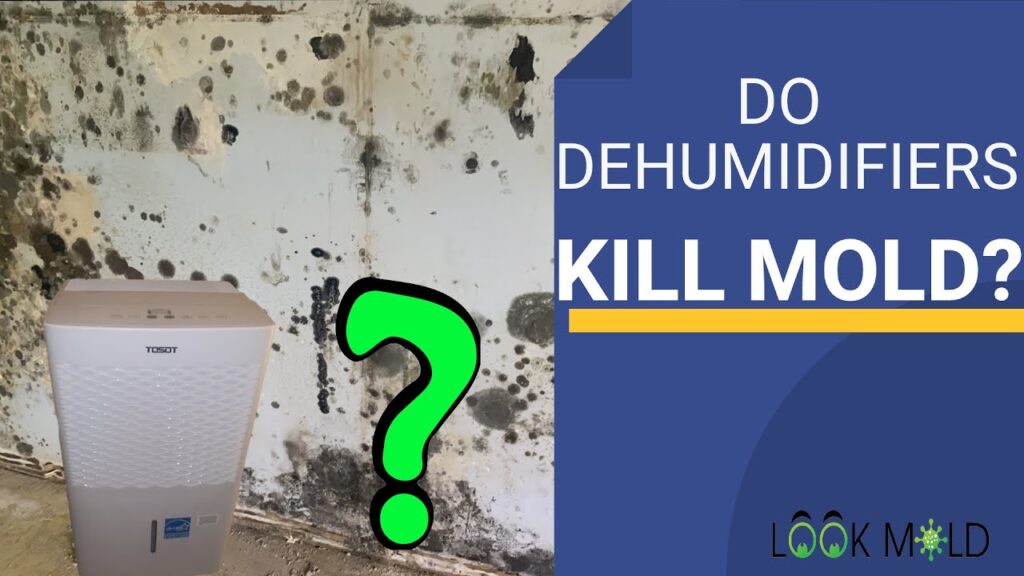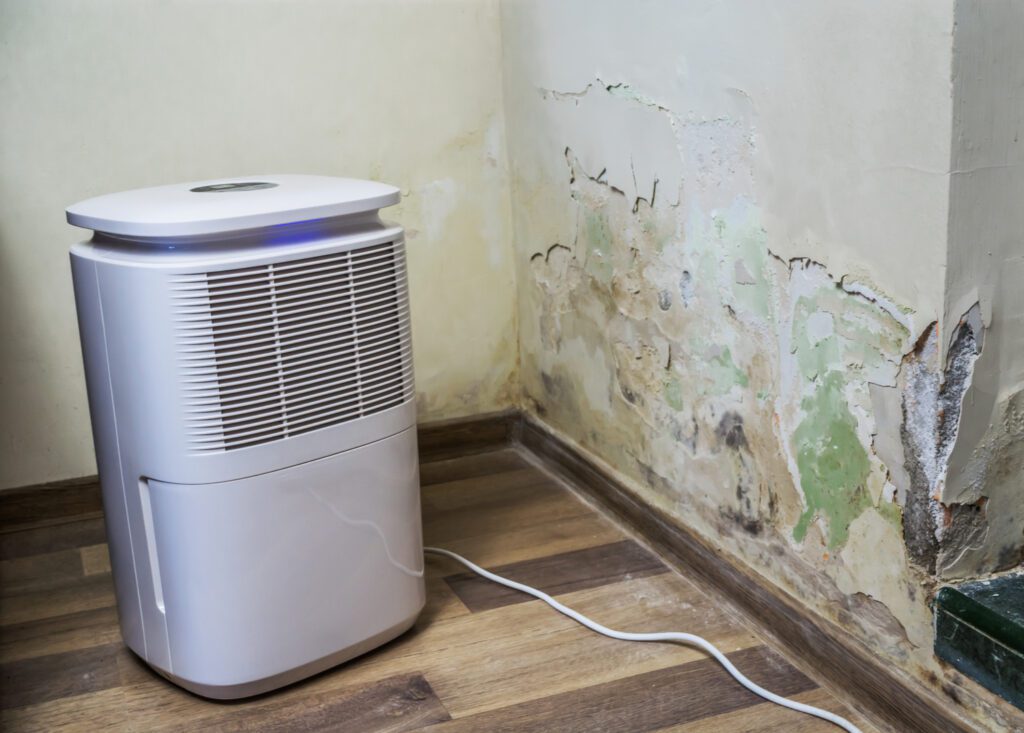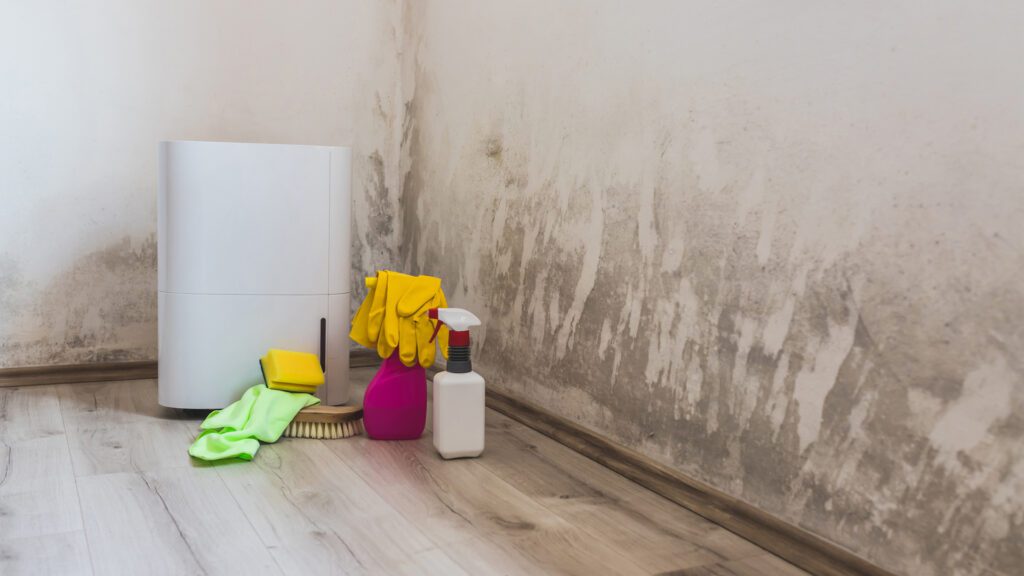Are you tired of battling with mold in your home? Well, you’re in luck because today we’re going to answer the burning question on everyone’s mind: do dehumidifiers truly remove mold? It’s a common misconception that dehumidifiers can single-handedly eliminate mold growth, but the truth is a bit more complex. In this article, we’ll explore the role of dehumidifiers in mold prevention and discuss some additional steps you can take to effectively tackle this persistent problem. So, let’s get started on the path to a mold-free home!

How Do Dehumidifiers Work?
Dehumidifiers play a crucial role in controlling the humidity levels in indoor spaces, including our homes, offices, and recreational areas. These devices work by reducing the moisture content in the air, thereby preventing excessive humidity that can lead to mold growth and other moisture-related issues. Understanding the mechanisms behind dehumidification is key to harnessing their full potential in maintaining a healthy and comfortable living environment.
Dehumidifiers and Moisture Control
Humidity is the amount of moisture present in the air. It has a significant impact on our comfort, as well as on the condition of our surroundings. Dehumidifiers help maintain optimal relative humidity levels, which are typically between 30% and 50%, depending on personal preferences and climatic conditions.
Excessive humidity can lead to a myriad of problems, including the growth of mold, mildew, and other fungi. These organisms thrive in damp environments and can cause various health issues such as respiratory problems, allergic reactions, and skin irritation. Additionally, high humidity can contribute to the deterioration of furniture, building materials, and electronic devices.

Mechanism of Dehumidification
Dehumidifiers function by extracting moisture from the air. The process begins when humid air is drawn into the dehumidifier unit through a fan. The air then passes over a set of cooling coils, causing the moisture to condense into water droplets. This water is collected in a reservoir or expelled through a drainage system, while the dehumidified air is reheated and released back into the room.
Most dehumidifiers use a refrigeration-based system called a compressor dehumidifier. This type of dehumidifier works similarly to a refrigerator or air conditioner, in which the cooling coils are colder than the dew point temperature of the air, causing water vapor to condense.
Ideal Relative Humidity Levels
Maintaining an ideal relative humidity level is crucial for preventing mold growth and maintaining a comfortable indoor environment. A relative humidity level of 30% to 50% is generally recommended, as it strikes a balance between preventing mold and mildew without causing excessive dryness.
It is important to note that different areas within a home or building may require different humidity levels. For example, basements and crawl spaces are typically more prone to higher humidity, so a slightly lower relative humidity level may be necessary in these areas.

The Relationship Between Dehumidifiers and Mold
Mold is a pervasive issue in many homes and buildings, and it thrives in moist environments. The presence of mold not only compromises the structural integrity of buildings but also poses health risks to occupants. Dehumidifiers can play a vital role in preventing mold growth and mitigating its impact.
Can Dehumidifiers Prevent Mold Growth?
While dehumidifiers cannot completely eliminate mold spores from the air, they can greatly reduce the conditions necessary for mold growth. By maintaining appropriate humidity levels, dehumidifiers make it significantly more challenging for mold to colonize and spread.
However, it is essential to note that dehumidifiers alone may not be enough to prevent mold growth in all cases. Other factors such as ventilation, insulation, and proper upkeep of a property are also critical in mold prevention.
Do Dehumidifiers Remove Existing Mold?
Dehumidifiers are not designed to remove existing mold colonies or spores. Their primary function is to control and maintain humidity levels. If you have mold problems in your home, it is crucial to address the underlying cause and seek proper mold remediation methods, such as hiring a professional mold removal service.
Using a dehumidifier in conjunction with mold remediation techniques can help prevent future mold growth by controlling the moisture levels in the air. However, it is essential to ensure that the mold-infested area is thoroughly cleaned and treated before relying solely on a dehumidifier.
Effectiveness of Dehumidifiers on Various Types of Mold
Dehumidifiers can be effective in preventing the growth of most types of mold. However, it is important to consider that different molds have differing moisture requirements. Some molds thrive in very high humidity levels, while others can grow in relatively low humidity. Therefore, while a dehumidifier can significantly reduce the overall moisture content in the air, it may not be equally effective against all mold species.
In cases where specific types of mold are a concern, it is advisable to consult a mold remediation specialist or an indoor air quality expert who can provide specialized guidance and solutions.
Factors to Consider When Using Dehumidifiers for Mold Removal
Using dehumidifiers as part of your mold prevention and control strategy requires careful consideration of various factors to ensure optimal results. The following factors should be considered when using dehumidifiers for mold removal:
Size and Capacity of Dehumidifier
The size and capacity of a dehumidifier are crucial for its effectiveness in removing excess moisture. The capacity of a dehumidifier is typically measured in pints or liters of water removed per day. When selecting a dehumidifier, consider the size of the space you intend to dehumidify and choose a unit with the appropriate capacity to adequately address the moisture issue.
Placement and Coverage Area
Strategic placement of dehumidifiers is essential to maximize their effectiveness. Place the dehumidifier in the area with the highest humidity or where mold growth is a concern. Additionally, ensure that the dehumidifier is placed in a well-ventilated area to allow sufficient airflow and circulation for optimal moisture removal.
It is important to note that dehumidifiers typically have limited coverage areas. If you are dealing with mold in multiple rooms or large spaces, you may need multiple dehumidifiers or a more extensive moisture control system.
Air Circulation and Ventilation
Proper air circulation and ventilation are vital for effective moisture control. Dehumidifiers work best when the air is constantly circulating, allowing them to remove moisture efficiently. To enhance air circulation, ensure that air vents are unobstructed and consider using fans or opening windows when appropriate to encourage air movement.
Additionally, addressing any ventilation issues in your home, such as improving exhaust fans in bathrooms and kitchens or installing additional vents, can help prevent moisture buildup and facilitate the overall effectiveness of dehumidifiers.

Correct Usage of Dehumidifiers for Mold Removal
To harness the full potential of dehumidifiers in mold removal and prevention, it is important to follow proper guidelines and practices. The correct usage of dehumidifiers for mold removal involves the following steps:
Identifying the Source of Moisture
Before utilizing a dehumidifier, it is crucial to identify the source of moisture causing mold growth. Whether it is a leaky pipe, condensation, or poor ventilation, addressing the underlying cause is vital to prevent future mold problems. Once the source of moisture is identified and fixed, a dehumidifier can be used to maintain appropriate humidity levels and prevent mold regeneration.
Setting the Appropriate Relative Humidity
Setting the relative humidity level appropriately is essential for effective mold prevention. As mentioned earlier, a relative humidity level between 30% and 50% is generally recommended. Adjust your dehumidifier settings accordingly, and monitor the humidity levels regularly using a hygrometer, a device that measures relative humidity.
Be mindful not to set the humidity level too low, as overly dry air can cause discomfort and other issues such as dry skin or respiratory problems.
Monitoring and Regular Maintenance
Regularly monitoring the performance of your dehumidifier is crucial to ensure its effectiveness. Check the water reservoir or drainage system regularly and empty or clean it as necessary to prevent mold or bacterial growth. Keep the dehumidifier clean by following the manufacturer’s instructions for maintenance, such as cleaning or replacing filters and coils. Regular maintenance helps ensure optimal performance and longevity of the dehumidifier.
Potential Limitations and Additional Measures
While dehumidifiers are effective tools in mold prevention and control, there are certain limitations to be aware of. Consider the following potential limitations and additional measures when dealing with mold:
Extreme Cases of Mold Contamination
In cases of severe mold contamination or large-scale infestation, relying solely on dehumidifiers may not be sufficient. Professional mold remediation services may be necessary to effectively remove and treat the mold-infested areas.
Effectiveness on Porous Surfaces
Dehumidifiers primarily remove moisture from the air, and their effectiveness on porous surfaces, such as fabric, carpets, or wood, can be limited. Mold may still persist in these materials, even when humidity levels are properly controlled. In such cases, additional measures such as thorough cleaning, disinfection, and targeted treatment may be required to address mold growth on these surfaces.
Combining Dehumidifiers with Mold Remediation Techniques
Dehumidifiers work best in conjunction with other mold remediation techniques. When dealing with active mold growth, it is crucial to address the source of moisture, clean the affected areas, and implement appropriate remediation methods. Using dehumidifiers alongside these techniques can help prevent future mold growth by maintaining optimal humidity levels and ensuring a dry environment that is inhospitable to mold.
In conclusion, dehumidifiers are valuable devices in controlling and preventing mold growth by effectively reducing excess moisture in the air. Understanding their mechanisms, ideal relative humidity levels, and correct usage is essential for harnessing their full potential. When used in combination with other mold prevention and remediation techniques, dehumidifiers contribute significantly to maintaining a healthy and mold-free living environment. By being proactive in moisture control, you can safeguard your property, protect your health, and ensure a comfortable living space for you and your loved ones.
